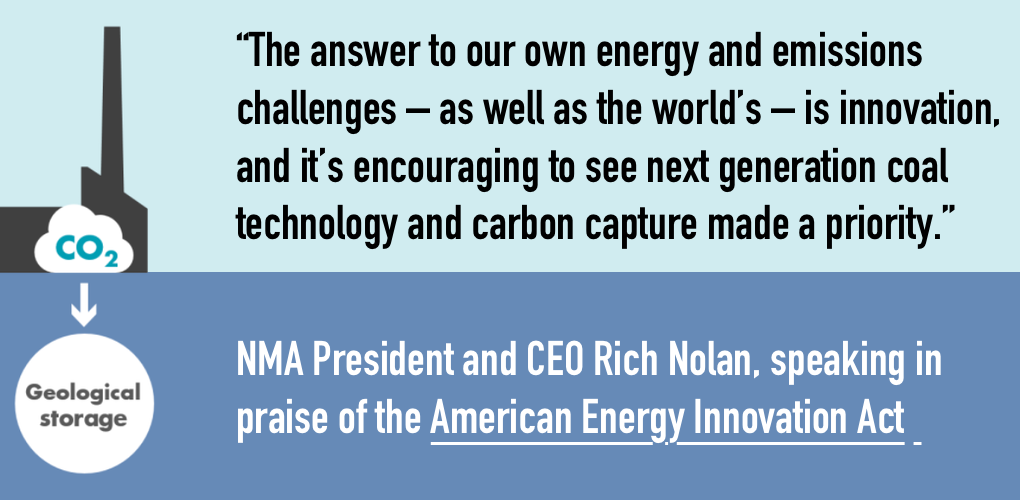
Energy Legislation that Puts Innovation First
For the first time in more than a decade, the U.S. may be getting closer to passing comprehensive energy legislation. Earlier this week, the Senate voted 84-3 to start debate of an energy package introduced by senators Lisa Murkowski (R-AK) and Joe Manchin (D-WV). The legislation, S. 2657, the American Energy Innovation Act, has drawn strong bipartisan support as it aims to improve the nation’s energy policy.
The package includes parts of more than 50 bills that made it through the Senate Energy Committee, and it’s built – wisely – on a foundation of innovation, with recognition that modern energy policy continues to be an all-of the above energy policy.
NMA president and CEO Rich Nolan praised the bill and the inclusion of important measures to make the U.S. the world leader in the development and deployment of clean coal and carbon capture technologies. He said, “The answer to our own energy and emissions challenges – as well as the world’s – is innovation, and it’s encouraging to see next generation coal technology and carbon capture made a priority.”
With an eye towards the necessity of creating replicable solutions that actually work with the fuels the world uses and will continue to use, Nolan continued, “additions of alternative energy sources are coming largely on top of existing energy demand, not in place of it, with coal meeting 38 percent of global electricity demand. Commonsense policy can help support a solution to the emissions challenge both at home and abroad, allowing us to utilize the incredible ingenuity and capacity of the nation’s coal workforce and capture a market for advanced energy technology that is only growing.”
Among other carbon capture measures, the bill calls for the deployment of five carbon capture projects by 2025, projects that would be split between coal and natural gas. That split is important recognition that carbon capture isn’t just coal technology, it’s fossil fuel technology. It’s also an important acknowledgement that both coal and gas are here to stay and critically important to providing affordable, reliable power for years to come.
A number of utility executives have been clear about the need for adding more low-emission, dispatchable technologies. Simply put, the tools currently available aren’t good enough. The challenges posed by intermittent and unreliable wind and solar power are significant. As more wind and solar generation is added to the grid, ensuring the delivery of affordable, reliable power when consumers need it most, is getting more complex, not less.
Setting aggressive emissions-reduction deadlines and targets, using currently available technology – as some policymakers are doing – is a recipe for regressive costs, threats to the reliability of our grid and weakened economic competitiveness. That approach puts the cart before the horse. In other words, the right approach is to put innovation and technology first. And as Fatih Birol, director of the International Energy Agency, has said, no technology is more “vital” than carbon capture.
Senate Majority Leader Mitch McConnell (R-KY) has also offered his strong support for the legislation, saying, “There’s a reason why this legislation has earned widespread praise from the researchers and energy industry leaders who would be affected the most. It is the product of serious, good-faith, bipartisan work. That’s why organizations from the National Mining Association to the Environmental Defense Fund have found common ground in endorsing it.”
The American Energy Innovation Act helps move the ball forward and is critically important to further developing and deploying the technologies essential to a modern energy policy.
- On March 5, 2020
